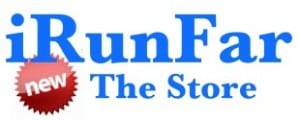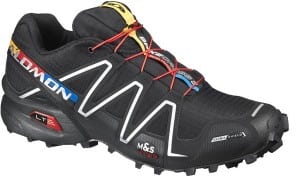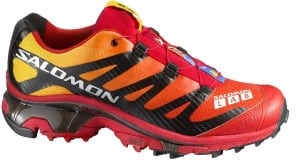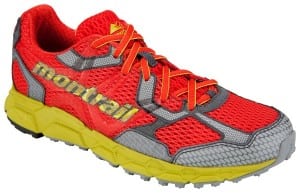 Since the creation of the iRunFar Store,* I’ve sought to bring you the best trail running products from around the world. More specifically, I’ve aimed to use my exposure to a vast array of gear to find and select products that you’re not likely to find at your local specialty running retailer. (Please, go support your local running retail shop when you can. Otherwise, consider iRunFar your community – even if not-so-local – running shop.) I love Brooks Cascadias and New Balance MT110s, but you can find them nearly anywhere running shoes are stocked. The iRunFar Store is home to niche trail running products you’ll love… if you ever hear about them.
Since the creation of the iRunFar Store,* I’ve sought to bring you the best trail running products from around the world. More specifically, I’ve aimed to use my exposure to a vast array of gear to find and select products that you’re not likely to find at your local specialty running retailer. (Please, go support your local running retail shop when you can. Otherwise, consider iRunFar your community – even if not-so-local – running shop.) I love Brooks Cascadias and New Balance MT110s, but you can find them nearly anywhere running shoes are stocked. The iRunFar Store is home to niche trail running products you’ll love… if you ever hear about them.
The iRunFar Store’s also unique in that its growth is completely organic. I started it with $1,000 worth of running hats as well as custom shirts I only paid for after a customer ordered one. I’ve never taken out a loan or opened a line of credit at a bank. There are only two reasons the store has grown. First, because iRunFar’s readers have loved the products we’ve offered. Second, because the store’s success supports our greater aim: to provide the best trail running and ultrarunning news and resources on the internet.
The next step in the iRunFar Store’s evolution is the addition of trail running shoes. The initial additions are the Salomon Spikecross 3 CS, Salomon S-Lab Soft Ground, and the Montrail Bajada. The Spikecross is an excellent specialist for icy conditions while I’ve logged 70+ mile runs in both the S-Lab Soft Ground and Bajada.
Salomon Spikecross 3 CS
 Last year, the Salomon Spikecross 3 CS ($160) was Runner’s World magainzes’s trail running shoe of the year. I wore it a great deal in the snow-fest that was Park City last January through April. Funny thing is, I wore it more on the roads (most trails were unrunnably buried) and loved them for eliminating worries of black ice at night. The Spikecross are Salomon’s popular and well-lugged Speedcross 3 with carbide spikes embedded in the outsole. In addition, the Spikecross features Salomon’s ClimaShield technology. Unlike other companies, Salomon applies waterproofing only to select areas of the upper so that a majority of moisture is kept out of the shoe while allowing better breathability through the areas of the upper where the membrane is not applied.
Last year, the Salomon Spikecross 3 CS ($160) was Runner’s World magainzes’s trail running shoe of the year. I wore it a great deal in the snow-fest that was Park City last January through April. Funny thing is, I wore it more on the roads (most trails were unrunnably buried) and loved them for eliminating worries of black ice at night. The Spikecross are Salomon’s popular and well-lugged Speedcross 3 with carbide spikes embedded in the outsole. In addition, the Spikecross features Salomon’s ClimaShield technology. Unlike other companies, Salomon applies waterproofing only to select areas of the upper so that a majority of moisture is kept out of the shoe while allowing better breathability through the areas of the upper where the membrane is not applied.
The winter’s been the opposite of last year’s here in the Wasatch. We’ve had scant snowfall, so I’m still out running the trails. Where the trail’s not bare, it’s icy as all get out. Yesterday, I went out for what turned out to be a hard 10 miles on twisty, turny trails-turned-ice chutes. I powered over them with confidence in the Spikecross .
As a bonus, the Spikecross’s Speedcross 3 platform feels much more stable than its predecessor, the Speedcross 2.
Order the Salomon Spikecross 3 CS
Note: The Spikecross runs a tad small and you’re more likely to wear these with thicker running socks, so I’d recommend going a half size up.
Salomon S-Lab Soft Ground
 I logged all of two runs and 10 miles in the Salomon S-Lab Soft Ground ($160) before donning them for the start of the 2011 Ultra-Trail du Mont-Blanc. As with 2010, heavy rains inundated the course and I wanted to be prepared for steep, muddy descents. I’d worn plenty of luggy trail shoes, but none with enough stability or support that I’d want to wear them for the majority of a 100 miler. Having enjoyed running in the S-Lab 3, I was excited when I saw the S-Lab Soft Ground. It was a real shoe with mud-eating lugs akin to those on Salomon’s Speedcross. At UTMB, I intended to wear the Soft Ground only as long as the rain and mud persisted, but when I descended dry trails into Courmayeur to meet my crew at mile 50, I knew I wouldn’t be changing shoes. The Soft Grounds were with me until I stopped one way or another. (Sadly, a fatigue-related DNF at mile 70, as it turns out.)
I logged all of two runs and 10 miles in the Salomon S-Lab Soft Ground ($160) before donning them for the start of the 2011 Ultra-Trail du Mont-Blanc. As with 2010, heavy rains inundated the course and I wanted to be prepared for steep, muddy descents. I’d worn plenty of luggy trail shoes, but none with enough stability or support that I’d want to wear them for the majority of a 100 miler. Having enjoyed running in the S-Lab 3, I was excited when I saw the S-Lab Soft Ground. It was a real shoe with mud-eating lugs akin to those on Salomon’s Speedcross. At UTMB, I intended to wear the Soft Ground only as long as the rain and mud persisted, but when I descended dry trails into Courmayeur to meet my crew at mile 50, I knew I wouldn’t be changing shoes. The Soft Grounds were with me until I stopped one way or another. (Sadly, a fatigue-related DNF at mile 70, as it turns out.)
Overall, the S-Lab Soft Ground is a comfortable, well-protected, well-lugged shoe that’s great for ultra-distance running. The Soft Ground’s lugs do double duty: providing excellent traction along with a few orders of magnitude more protection than the standard version of the S-Lab. Aside from UTMB, I’ve logged most of my Soft Ground miles this winter in Park City, Utah. Not only do the lugs and wide S-Lab platform perform well where the trails have become muddy, they kick butt on the packed snow trails I’ve enjoyed for the past two months. I’d highly recommend these for those looking to run winter trails that aren’t glazed over.
Order the Salomon S-Lab Soft Ground
Montrail Bajada
The Montrail Bajada ($110) was love at first sight. As a long-time Montrail wear tester, I first tested this shoe back in December 2010. It only took me a run or two before I texted Montrail President Topher Gaylord that he had the Cascadia killer on his hands. Six months later (after begging Montrail not to make me return the shoes), I wore the Bajada for the final 80 miles of the 2011 Western States 100. It was my go-to training and racing shoe last spring. I suspect I’ll be wearing it a great deal again once Park City’s trails dry out this spring.
Unlike the Spikecross and Soft Ground, the Bajada is a tremendous jack-of-all-trades. It’s got outstanding roll and weighs a svelte 10 ounces, while providing plenty of support as well as a 10mm heel-to-toe drop, both of which I love in an ultramarathon shoe. I’ve already gushed about this shoe in iRunFar’s full Montrail Bajada review.
Note: We’re getting the Bajada before the general release. Pre-order them now and we’ll send them out as soon as they arrive (within the next two weeks).
Wrap Up
That’s it for now. If you order any of these models, I hope you enjoy them as much as I have. We’ll be adding two other sweet trail running shoes in the next two months, but more on those later.
* Okay, since I first added something other the iRunFar-branded hats and shirts to the iRunFar Store.

